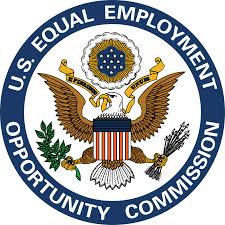The last time that the U.S. Equal Employment Opportunity Commission (EEOC) issued an enforcement guidance on harassment in the workplace Bill Clinton was President, Star Wars: The Phantom Menace was playing in movie theaters, and the world was awaiting the potential Y2K apocalypse. That’s right, it was back in 1999, before marriage equality, #MeToo, or virtual meetings.
The EEOC’s 2024 Enforcement Guidance on Harassment in the Workplace replaces materials dating back to 1987 and gives employers and workers fresh insights into preventing and remedying harassment in the 21st Century. Among the matters discussed are harassment based on sexual orientation and gender identity, the EEOC noting that harassment can include “outing” someone, intentional and repeated misgendering, or pestering someone because of their gender-nonconforming appearance.
The new Guidance also includes material on harassment related to pregnancy, childbirth and related medical conditions, including lactation, using (or not using) contraception and choosing to have (or not have) an abortion. Genetic information—the newest of the federally-protected, characteristics—is the subject of one of the 77 examples of harassment in the 2024 Guidance: During a breakroom discussion of DNA ancestry tests, an employee says that a cousin recently took a genetic test that revealed that they had inherited the gene mutation that would put them at a higher risk of developing hypertrichosis, a condition also known as Werewolf Syndrome. Soon after this discussion, coworkers began to refer to the employee as “the werewoman,” to make howling noises when they passed her office, and to leave dog treats on her desk.
In addition, the EEOC examined the ways harassment in the 21st Century work environment can look different than when guidance was last updated back when Tiger Woods was winning his first PGA championship. The 2024 Guidance stresses that harassment can occur using an employer’s email system, instant message system, videoconferencing technology, intranet, or official social media accounts. Here are some examples: sexist comments made during a video meeting, ageist or ableist comments typed in a group chat, racist imagery visible in an employee’s workplace during a webinar, or sexual comments made during a videoconference about a bed being near an employee working from a hotel room.
Further, employers may be responsible for conduct that occurs outside of the workplace or on personal communications devices, if that conduct contributes to a hostile work environment in the workplace. For example, if an Arab American employee is the subject of ethnic epithets that a coworker posts on a personal social media page, and either the employee learns about the post directly or other coworkers see the comment and discuss it at work, then the social media posting can contribute to a hostile work environment based on national origin.
What this means to you:
In the 2024 Guidance, the EEOC lists seven features of an effective anti-harassment training program, including:
- giving information about employees’ rights if they experience, observe, become aware of, or report conduct that they believe may be prohibited
- advising supervisors and managers about how to prevent, identify, stop, report, and correct harassment, and
- being in a clear, easy-to-understand style and format.
Fair Measures’ harassment prevention training programs have all of the EEOC’s recommended features—and more. Just updated to include the 2024 EEOC Enforcement Guidance, our Harassment Prevention webinars for managers and employees and our Respectful Workplace classroom training teach your employees what they need to know in 2024 about workplace harassment prevention, bullying prevention, discrimination prevention and bystander training to keep your workplace a great place to work.
Let us help you make your workplace the best it can be. To find out more about our national HR and employment law training programs, or to book a workshop, please call 800-458-2778 or send us an email!
Updated 07-08-2024
Information here is correct at the time it is posted. Case decisions cited here may be reversed. Please do not rely on this information without consulting an attorney first.

